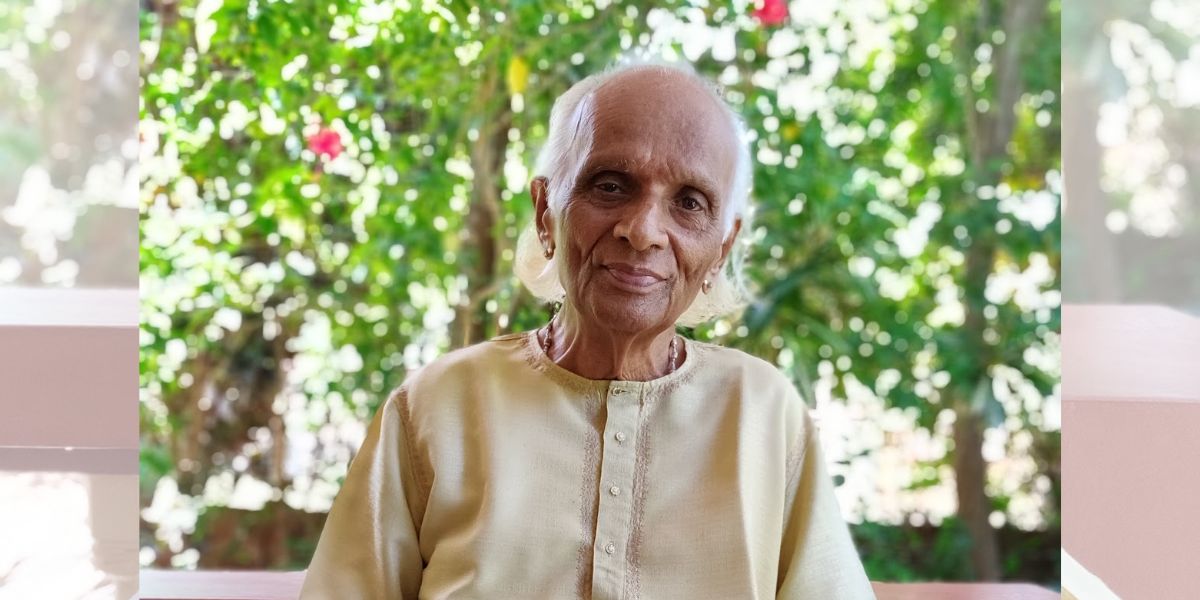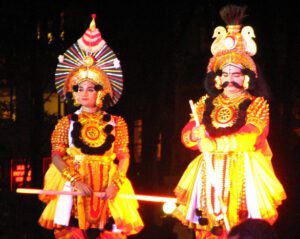Born Keshava Shettigar on 4 June 1935, he chose the name Ambatanaya (son of Amba) as a mark of his devotion. Mudradi was well-known for the rich emotional quality of his writing and his turn for the satirical and ironic. His work ‘Doortha Raajakeeya Naayakaashtottara Shatanaamaavalee’ (The 108 Names of Iniquitous Political Leaders) was a singular political satire.

Ambatanaya Mudradi. (Supplied)
Ambatanaya Mudradi, famed Yakshagana artist, poet, and explicator, well-known scholar, and important Kannada writer, is no more. He passed away early morning on Tuesday, 21 February 2023. He was 88 and left behind his wife, three daughters, and five sons.
Ambatanaya Mudradi was born Keshava Shettigar on 4 June 1935.
A devotee of Shree Bhadrakali Devi of the Bhakre Matha of Mudradi — who he praised as the Jagadambe (world-mother) in his devotional poems — Shettigar chose the name Ambatanaya (son of Amba) as a mark of his devotion.
Despite studying only up to the 8th grade, he would come to develop an uncanny knowledge of the world and its goings-on.
In his eighties, he continued to fondly recall his guru, Mudradi Mariappa Kalkoora, who took him, a boy herding cows in the fields, to school and encouraged him in his studies. Having been presented with this opportunity, Shri Mudradi would make the most of it and nurture his various interests through self-study.

Yakshagana performance (Wikimedia Commons/Raguks)
Speaking of his journey in the field of Yakshagana, Ambatanaya Mudradi once said: “I am not originally a Yakshagana veshadhaari [costume-donning stage actor]. When I was young, I used to go with my father, Booba Shettigar, to watch Talamaddale [a form of Yakshagana that does not include costume or dance, but instead involves oratory, singing, discourse, and dialogue]. I used to listen keenly to stories told during the Talamaddale performance. My interest kindled, I would later go on to become an orator at the Amruteshwari Idagunji Mela for three and a half years.”
Mudradi was well-known for the rich-meaninged emotional quality of his writing and his turn for the satirical and ironic.
His work titled Doortha Raajakeeya Naayakaashtottara Shatanaamaavalee (The 108 Names of Iniquitous Political Leaders) was a singular political satire while his play about Karna was made a text for the students of Mangaluru University.
In his long career, Mudradi wrote more than 200 Yakshagana prasangas (dramatic situational plays), of which only about half were ever published. His prasanagas about Rukmangada, Dharmaraya, Vidura, and Sanjaya were considered novel for the way they tackled these well-known characters and their stories.
Over the course of his long Yakshagana career, Mudradi would engage in discursive oratory on stage with basically all the great Yakshagana and Talamaddale artists of his time, including Malpe Shankaranarayana Samaga, Ramadasa Samaga, Sheni Gopalakrishna Bhat, Perla Krishna Bhat, Kumble Sundara Rao, Moodambail Gopalakrishna Shastry, and M Prabhakar Joshi.
A contemporary of Mudradi, Kumble Sundara Rao, who passed away just a few months ago, had this to say about him. “Ambatanaya’s language is pure and expertly crafted. He is possessed of an excellent sense of shruti [musical tone] and the nuances of sound. I have engaged in discursive oratory with him on a number of occasions; each of these has been a pleasure. He is someone who is always up for a discussion but who stays away from arguments.”
Ambatanaya Mudradi’s mastery of the Yakshagana art was recognised all over.
Indeed, the number of awards that came the way of the Yakshagana artist was overwhelming. They included the Rajyotsava award presented by the government of Karnataka, the Polya Dejappa Shetty award, the Ninjooru award, the Sahitya Siri award presented by the Palimaru Swamiji, the Sahitya Kala Vacaspati award, and the Rama Vittala award presented by the Pejawar Swamiji, and the prestigious Parthisubba award presented by the Yakshagana Academy.
In addition, Mudradi was the president of the 7th All-Karnataka Beladingala Sahitya Sammelana (Literary Congress) as well as the president of the Kannada Sahitya Parishat in the Udupi district.
Active until the very end, Mudradi had engaged just last week in a discussion with the president of the very first Yakshagana Sammelana held in Udupi. The occasion had also seen the release of his book titled Yakshagana Mattu Harikathe: Ondu Taulanika Adhyayana (Yakshagana and Harikathe: A Comparative Study).
(This essay is based primarily on material sourced from the website, Samskriti Sallapa. It has been used with permission and translated into English)
(Madhav Ajjampur is a writer and translator. He writes for several reasons, the most important perhaps being his wish to stay actively engaged with the world around him. His essays, poems, and translations have appeared or are forthcoming in several publications, including ‘The Hindu’, ‘EKL Review’, ‘Autumn Sky Poetry Daily’, ‘Another Chicago Magazine’, ‘Kyoto Journal’, and ‘Modern Poetry in Translation’. He is the author of ‘The Pollen Waits on Tiptoe’, a book of his English translations of selected poems by DR Bendre, Kannada’s foremost lyric poet.)

Apr 26, 2024

Apr 25, 2024

Apr 25, 2024

Apr 25, 2024

Apr 25, 2024

Apr 25, 2024